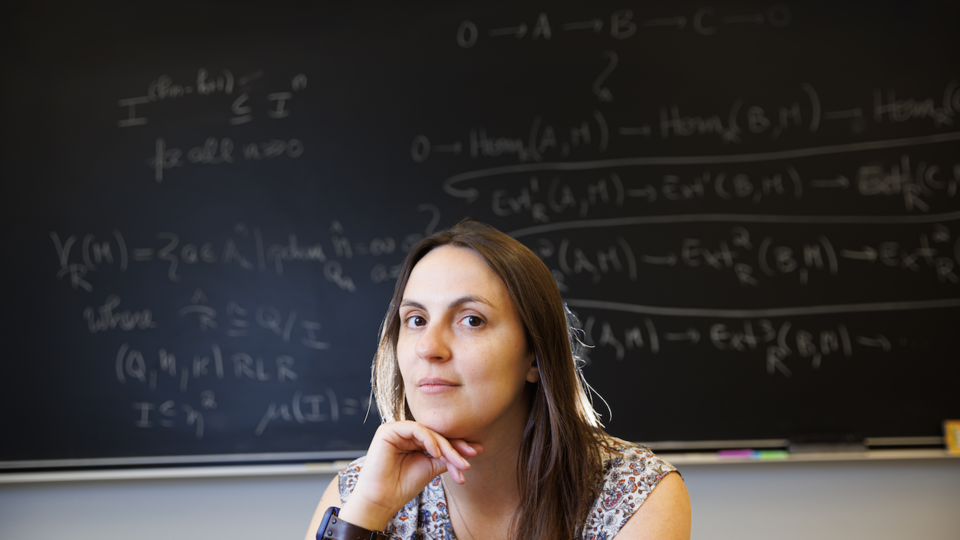
by Tiffany Lee | Research and Economic Development
A University of Nebraska–Lincoln mathematician has received a grant from the National Science Foundation to advance her work in commutative algebra, an area of abstract algebra that provides a framework for visualizing and understanding the properties of shapes in higher dimensions that is key to solving real-world problems in robotics, statistics, physics and beyond.
Eloísa Grifo, assistant professor of mathematics, is the first woman from the Nebraska U mathematics department — and the second Husker mathematician overall — to receive funding from NSF’s Faculty Early Career Development Program. With the five-year, $425,000 CAREER grant, Grifo will expand on her work in commutative algebra, particularly as it relates to applications of p-derivations, symbolic powers and cohomological support varieties.
Her work focuses on points of irregularity, called singularities, in the geometric shapes described by a system of polynomial equations. Visually, singularities look like a sharp point, a corner or a crinkle. A circle, represented by the polynomial equation x^2 + y^2 = 1, has no such points. By contrast, the curvy, V-like shape that results from the equation x^2 – y^3 = 0 has a singularity, located where the two sides of the V meet.
Grifo is interested in singularities of shapes that are more complex.
“For a 200-dimensional object, I can’t draw it, and you can’t see it, so whatever interesting information I want to extract from it is not something that I can visualize geometrically,” she said.
The solution is to convert the problem from one of geometry to one of algebra: To learn about a shape’s singularities, Grifo probes the algebraic properties of the corresponding equations.
“To us, it’s these points of ‘bad behavior’ that are interesting,” Grifo said. “We want to understand this bad behavior and be able to classify it and distinguish between different types of bad behavior. We want to be able to tell you about the singularities of a 200 or 300D figure.”
Read more:
https://news.unl.edu/newsrooms/today/article/husker-mathematician-draws-from-geometry-to-advance-field-of-algebra/